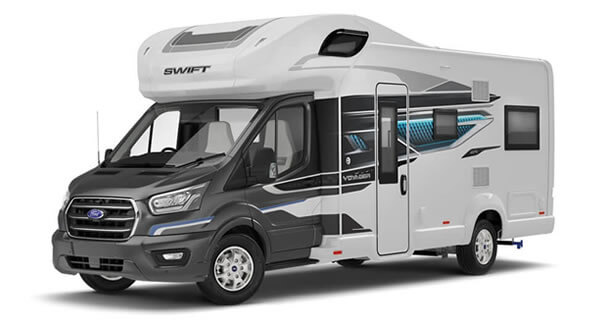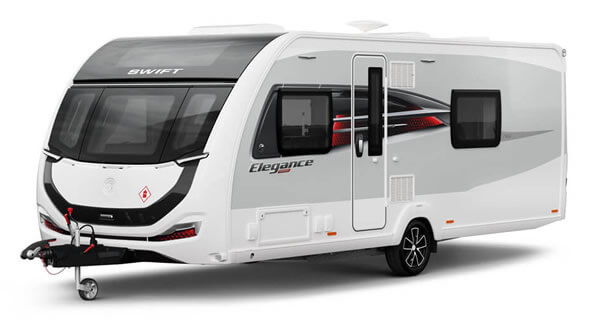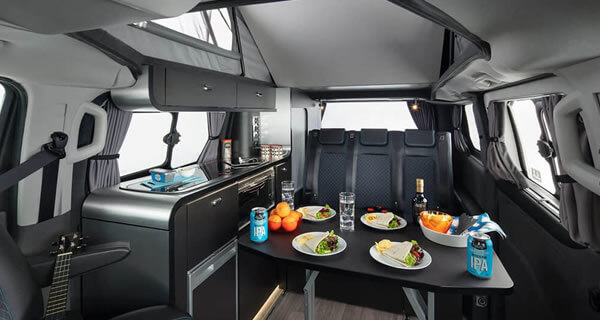Do caravans, motorhomes and campervans have electricity?
Published:
Many modern touring caravans and motorhomes do offer electricity, but the source and capacity of electrical power can vary depending on the size and features of the vehicle.
Let’s take a look at the common ways that leisure vehicles can provide electricity:
Onboard batteries
Many caravans and motorhomes are equipped with onboard batteries, which can store electricity and provide power for various systems throughout the vehicle, such as lighting, appliances, and heating systems. The batteries can be charged through the vehicle's engine, solar panels, or external power sources when they are available.
Solar panels
Some caravans and motorhomes are equipped with solar panels on their roofs, which converts sunlight into electricity. This energy can then be used to charge onboard batteries. Solar panels are a sustainable way to generate electricity when parked in sunny locations.
Hook up at a campsite
When parked at a campsite, caravans and motorhomes can often be connected to external power sources via electrical hook ups. These hook ups provide a direct supply of electricity to the vehicle, allowing you to use appliances and charge batteries without relying on onboard sources.
Vehicle alternator
While driving, the vehicle's alternator charges the onboard batteries. This can be a significant source of power, especially for motorhomes with larger batteries.
Generator
Some motorhomes come with built-in generators that run on fuel, such as gasoline or diesel. These generators can produce electricity to power various appliances and systems in the vehicle. They are useful when you need a significant amount of power, but they can be noisy and consume fuel.
Inverters
Inverters are devices that can convert the DC power stored in onboard batteries into AC power, which is what most household appliances use. This allows you to use standard electrical devices while off-grid, relying on your batteries as the power source.
Swift motorhome power features
To give you an idea of what modern motorhomes can offer from a power perspective, let’s take a look at some of the features of our award-winning Swift Voyager motorhome (pictured below) can provide whilst on the road or at a campsite:
- Long life, 80 Amp-hour leisure battery
- 12V exterior power point for pump filling of water tank
- Mains 230V supply, via easy-access consumer unit, to sockets, fridge, heater, water heater and battery charger/transformer
- 25 metre mains hook-up cable
- 25 Amp/300 Watt charger/transformer for leisure batteries
- Ultra-low energy LED lighting system
- A minimum of four 230V chrome sockets
- Dedicated USB points
- TV points with 230V and 12V sockets and aerial socket
- 100W solar panel and regulator
- EC400 Control unit with simple controls for monitoring and managing onboard systems
- External BBQ point
- Provision for gas bottles with fitted butane or propane regulator and propane hose
The specific power features and capabilities of a motorhome can vary significantly based on its size, make, model, and the manufacturer's design choices. It's essential to understand how to operate and manage the power systems in your motorhome to ensure a comfortable and enjoyable experience while travelling or camping.


"If you plan to stay at a campsite for an extended period, having an electric hookup allows you to maintain power without relying solely on batteries or alternative power sources. It's also advisable to understand and follow the campsite's rules and guidelines regarding power usage."
Jo Mitchell, Marketing Director at Swift
Swift touring caravan power features
Modern touring caravans can offer some advanced power features too, let’s take a look at these features on our award-winning Swift Elegance Grande caravan (pictured below):
- Swift Command control system with large 7” LCD colour touchscreen panel to control power, heating and charging settings
- On-board 4G Wi-Fi
- Alde radiator central heating and water heating with daily programming with LCD touchscreen control and choice of 1kW, 2kW or 3kW setting
- Fully protected mains electric system
- 25 metre mains hook-up cable
- 25 amp switchmode charger / transformer
- Wireless charging pad in lounge
- Low energy LED lighting throughout
- A minimum of four 230V sockets, two twin USB points and two twin USB points either side of fixed beds
- Two TV stations with 230V, 12V and aerial sockets with Co-Ax & satellite cables
- 13-pin Jaeger 12V car connector
- 100W roof mounted solar panel
- 230V mains external socket
- Aerial point in battery box for portable satellite dish connection
- BBQ point and connector
- External TV point
Again, as with motorhomes, specific features in a caravan can vary depending on the manufacturer, model, and size of the caravan. It's crucial to read and understand the owner's manual as it will provide detailed instructions for operating your caravan's power systems safely and efficiently.

Campervan power features
Smaller campervans can offer some pretty comprehensive power features too, let’s take a look at our award-winning Swift Monza pop-up top campervan (pictured below) to see what it can provide you with on your travels:
- 100W solar panel and regulator
- External shower point
- 95 amp leisure battery
- Travel USB socket
- 2kw Eberspacher diesel heating
- Easy to use control panel
- Gas locker with provision for 1 x 6kg gas bottle
Maintaining power in a campervan is crucial to ensure you have a comfortable and functional living space during adventures on the road. Regular checks and proactive maintenance will help prevent power-related issues during your travels.

Summary
In summary, modern caravans, motorhomes and campervans do offer electricity, but the availability and capacity of electrical power will vary depending on the size and features of the vehicle. Understanding and managing power consumption is important to ensure you have a comfortable and reliable experience on your travels while making the most of your available power sources.